How Long Does Recovery Take? Your Guide to Understanding the Drug Recovery Timeline

Whether you’ve been sober for one day or one year, it’s a common experience to wonder how long recovery takes, and what recovery timeline you can expect. The thought of a long and painful process is even a deterrent to sobriety for some.
While there’s no sugarcoating the duration of recovery, the time you put in towards treatment will be well worth the end result. If you’re thinking about starting a treatment or wondering how long it takes to reach full recovery, here’s what you need to know about a drug or alcohol recovery timeline and the circle of recovery.
Drug and alcohol recovery timeline
People have a tendency to crave clear expectations and structure. It’s no wonder people who are faced with substance use disorders often search for a drug recovery timeline. While there are various estimates online, and we’ll offer some typical windows for treatment programs, there is no one-size-fits-all timeline for overcoming addiction.
Healing from substance use is extremely personal. Each individual will struggle with unique triggers, environments and stressors. Moreover, rehab is largely influenced by the type of substance used and the duration and intensity of addiction. There are always other confounding variables, such as co-occurring mental health disorders or chronic pain, too.
Even with all of your personalized information, no doctor could give you a perfectly accurate timeline for detox, treatment completion and long-term success. There are no tools to predict whether you’ll relapse, either.
Understanding the recovery timeline starts with accepting that there are no guarantees in the process. There isn’t a hard and fast schedule and even the strongest individuals may, unfortunately, experience the harsh reality of relapse, lengthening the amount of time it will take to reach sobriety.
This isn’t a cause to lose hope, though. While the timeline of your treatment isn’t set in stone, there are some standard practices regarding the length of stay in inpatient care and continuing services. Understanding levels of care in treatment will give you the best idea of what to expect for a recovery timeline.
Levels of care
When professionals in the field of addiction recovery refer to levels of care, they’re identifying a continuum of services that ranges from intensive and medically-supervised detox to maintenance care years down the road.
While there are various scales to designate types of treatment, they’re typically broadly divided into two categories: inpatient (residential) and outpatient (non-residential). And from there subdivided into additional levels by the American Society of Addiction Medicine.
The ASAM criteria for levels of care
The ASAM devised numerous levels of care and matching criteria to assist addiction recovery professionals in assessing needs and providing evidence-based care. The ASAM levels of care account for medical needs, support services, history of substance use, personal strengths and outside environment.
Level 0.5
The levels of care begin at 0.5, or early intervention services, aiming to aid individuals who have not developed an addiction but present with risk factors. This type of intervention may last for weeks, months or years.
Level 1
This level of care consists of outpatient treatment, such as cognitive behavior therapy. This may occur once a week or more, but generally less than 10 hours a week. This is typically the longest stage of treatment and is sometimes considered “maintenance.”
Individuals may partake in outpatient treatment for about a year.
Level 2
Level 2 includes intensive outpatient care, which is a treatment for more than 10 hours per week but does not require overnight stays.
Level 3
For example, under this level of care would fall Level 3.1, which designates low-intensity residential care. These tend to include group homes or sober living homes. Treatment may only occur for a few hours a week, but the environment is designed to help a person build a lifestyle that supports sobriety.
Not everyone will spend part of their treatment in a sober living home, but this type of treatment can greatly enhance your chances of long-term sustainability in recovery. A typical stay is anywhere from a few weeks to three months. Depending on the type of facility, and the funding or insurance that is accepted, residents may live in these homes for up to a year.
To access this type of care, reach out to Pyramid Healthcare. At the Maryland – Californa location, you’ll find a safe and comfortable environment to prioritize your success in recovery. All of our Maryland facilities fall within this ASAM level of care.
Level 4
This level of care is the most intense and includes 24/7 medical care and supervision. This type of care, while intense, only lasts a short period of time, and generally aids a person through detox.
Level 4 treatment is similar to a withdrawal timeline, and maybe between five days and two weeks.
The circle of recovery
You won’t find an accurate drug recovery timeline, even through the best sources. While we believe anyone can achieve full sobriety despite their past, it’s important to understand that recovery is as unique as the people who are seeking it.
Recovery is more often described as a circle, with high and low points, setbacks and victories. Regardless of what your path looks like and the challenges you face, progress toward freedom is the goal.
To get started on your journey toward healing and peace, contact us.



